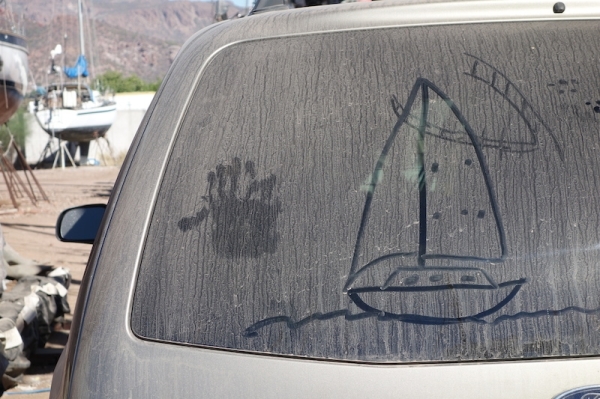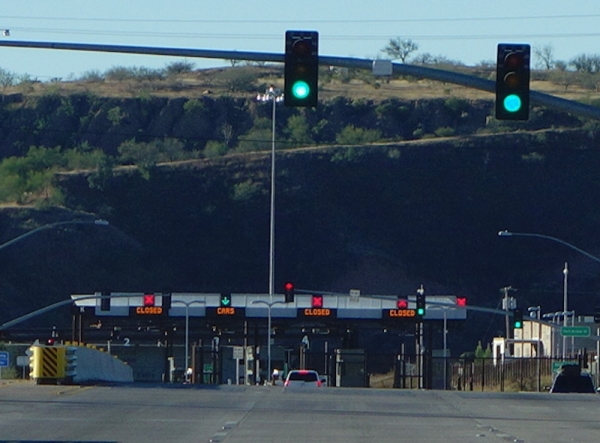
Slightly Nervous
Driving across the border into Mexico at Nogales was something I’ll admit to being a little concerned about. After all, there has been a lot going on recently. We had never done it before. With the back of the car full of stuff, how would we get through customs without getting an evil eye cast upon us?* Was it true that the paved roads fell abruptly a foot to the desert without any shoulder, that we would break an axle if our white-knuckled attention wavered, (or anyone else’s attention either)? What if we inadvertently break some traffic law and face the police? If we see someone broken down, should we stop and help?
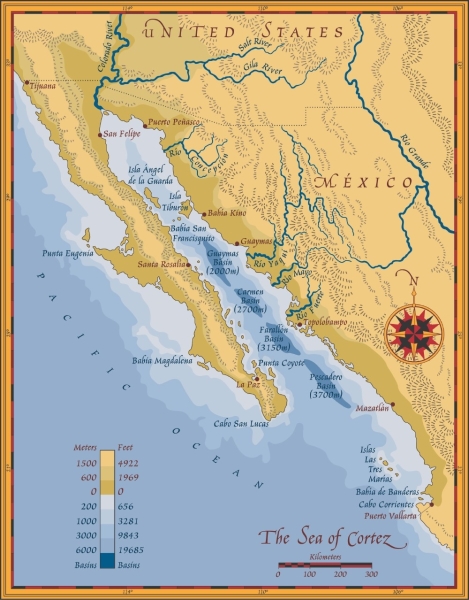
Don’t Worry, Be Happy!
Well none of those things happened or even came close to happening on the Arizona-Sonora interface. In retrospect such concerns seem almost laughable, as is so often the case. A life lesson I keep re-learning: worrying doesn’t help!
The Mexican entry traffic lanes have red or green lights, supposedly randomized. We got the green light and just kept moving. Going through about 8 AM probably helped, since all the lights were green and hardly an agente was stirring! About 19 kilometers further on is another stop wherein one pays the immigration fee, and buys car insurance for Mexico, or an import permit, if the car is going beyond Guaymas/San Carlos area.
The toll road (Highway 15) had its moments as it changed from a divided to a shared roadway between construction cones, but it was an uneventful drive on a decent road. There are some ‘off-label’ uses of the left-turn signal to learn. On the truck in front of you it means, not “I’m pulling out to pass something now”, but instead “It’s clear for you there behind me to pass now.”
We were back at the boat at lunchtime, none the worse for wear. Back in the land of limon and aguacate, tortillas and fish tacos, sunshine and smiling faces. Hooray!
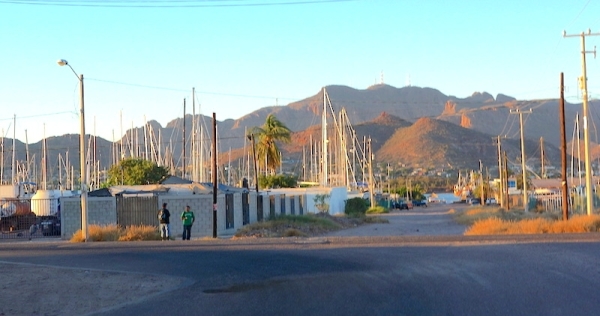
Nor had any of the dreadful consequences of summer in the desert near a hurricane zone befallen Galivant on her perch in the Guaymas Marina. We were told: Your interior woodwork will dry out and crack, you’ll get dust sifting in everywhere, ants and bees will invade, the jackstands will wash out in torrential rains if a hurricane comes. We saw people stuffing their thru-hulls with steel wool, putting wool hats atop their wind instruments, wrapping their winches and plastic bits with with enough aluminum foil to roast a bull.
Well, we did cover our winches and windlass, put shades in the hatches and ports and leave our Colombian greenhouse-cloth awning in place. When we got back the boat was just as we had left it, or cleaner thanks to a bit of rain over the summer. And we were well-looked-after by Gabriel, Arny, Andrés, Roberto and the guardiáns.
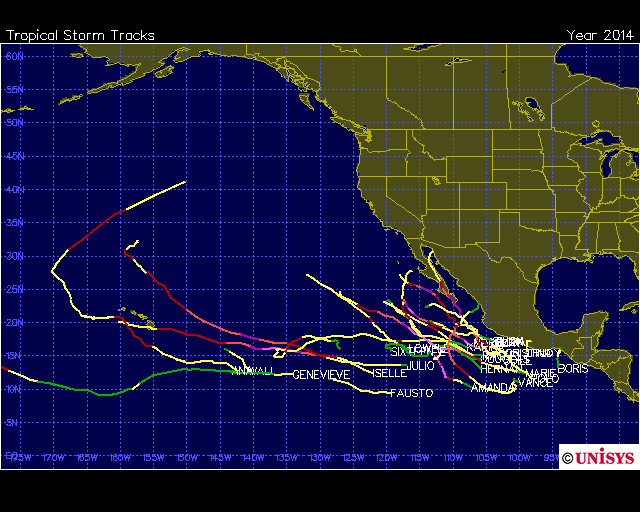
Hurricane Vance maybe was the one who gave us our washdown. Not everyone was so lucky. Further south, at Cabo San Lucas, on the tip of the Baja California peninsula, they took a big hit from Hurricane Odile in mid- September. In La Paz, Odile’s 125-knot gusts took lives and ruined buildings. Lives were lost in the anchorage as well; and boats sank and were blown ashore. In one of the haul-out facilities, Atalanta, they fell like dominoes.
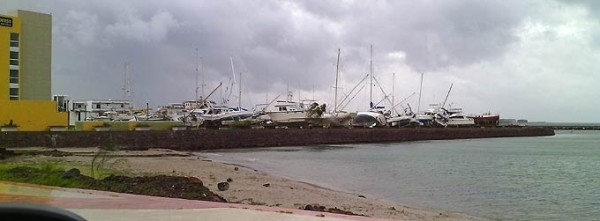
Get Back to Work
We’ve got plenty of work ahead of us. We’re getting a paint job, and transmission repairs, just for starters. Guaymas is a good place for both things. It’s a port city of several hundred thousand people but I am still studying what exactly makes it go.
We like moving ourselves through the world with public transportation. However we have a car of our own here and it certainly does make errands easier, the marina being a bit out of town. Until now I hadn’t fully appreciated its secondary use as a rolling storage shed. You should see the stuff we’ve got stacked in the back, like winter clothes and empty canning jars, and tools that haven’t earned their keep.
The temperatures are pleasant, highs about 80, overnight into the low 60s, or even into the 50s, at which point the coconut oil needs to be spooned out of its jar. Close the hatches! Where are my socks? Humidity is in the “Goldilocks’ mid-ranges. The sun shines almost all the time but the sun index is down to 6. The hours of night exceed those of day, 0700-ish and 1730-ish. The water temperatures are dropping into the low 70s if the satellite image is to be believed. We’re in Mountain Standard Time.
It might be better to be floating, but that will come, mañana.
